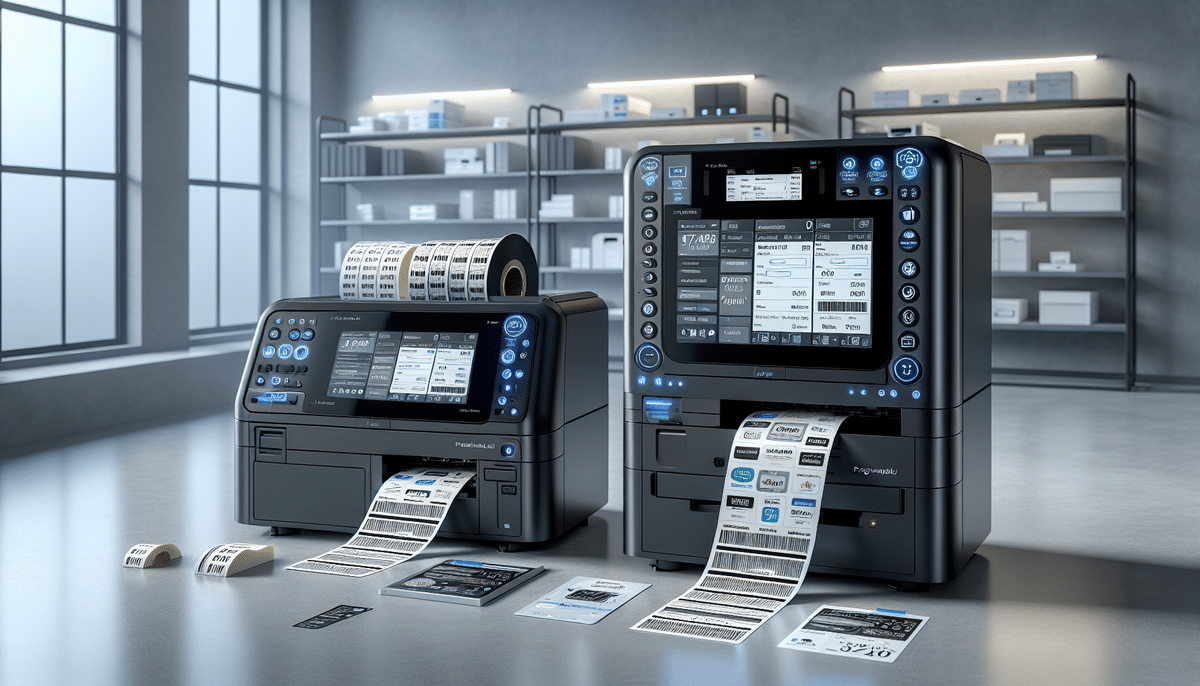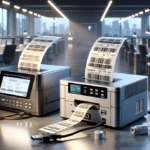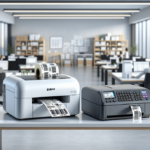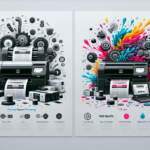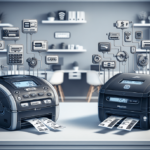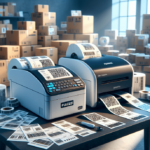Choosing the Right Zebra Printer: ZP450 vs. ZD620
Selecting the appropriate printer for your business's labeling needs is essential for efficient operations. The Zebra ZP450 and the Zebra ZD620 are two prominent models in Zebra's lineup, each offering distinct features tailored to different business requirements. This comprehensive comparison will help you determine which printer aligns best with your organizational needs.
Design and User Interface
Zebra ZP450 Design Features
The Zebra ZP450 boasts a compact and lightweight design, making it ideal for businesses with limited space. Its straightforward setup process and user-friendly interface, featuring indicator lights and push-button configurations, cater to users seeking simplicity and reliability.
Zebra ZD620 Design Features
In contrast, the Zebra ZD620 features a more robust build with a larger footprint, suitable for fixed locations. It is equipped with a color touch screen display, enhancing navigation and setup. The ZD620's durable metal frame ensures longevity, especially in high-demand environments.
Technical Specifications
Print Resolution
Both printers offer a standard print resolution of 203 dpi (dots per inch). However, the Zebra ZD620 provides an optional upgrade to 300 dpi, allowing for sharper and more detailed prints, which is particularly beneficial for printing intricate barcodes and fine text.
Connectivity Options
The Zebra ZP450 is limited to USB and serial connectivity, suitable for single-device setups. On the other hand, the Zebra ZD620 offers a variety of connectivity options, including USB, Ethernet, Bluetooth, and Wi-Fi. This versatility enables seamless integration into diverse network environments and supports multiple devices simultaneously.
Performance and Print Quality
Printing Speed
The Zebra ZD620 outperforms the ZP450 with a maximum print speed of up to 8 inches per second (ips), compared to the ZP450's 5 ips. This higher speed enhances productivity, especially in high-volume printing scenarios.
Print Quality
With the optional 300 dpi upgrade, the ZD620 delivers superior print quality, producing sharper images and more precise barcodes. The ZP450, while reliable, offers standard print quality suitable for general labeling tasks.
Media Handling Capabilities
The Zebra ZD620 excels in media handling, supporting a wide range of media types and sizes, including labels, tags, receipts, and wristbands. It features advanced options like label peeling and cutting, which enhance flexibility for diverse business needs. Additionally, the ZD620 can accommodate up to 300 meters of ribbon and label rolls up to 8 inches in diameter, reducing the frequency of media changes and improving efficiency.
Conversely, the Zebra ZP450 is limited to handling labels and tags with a capacity of up to 100 labels, making it more suitable for smaller-scale operations.
Power Consumption and Environmental Impact
The Zebra ZP450 is recognized for its energy efficiency, consuming less power compared to the ZD620. This lower power usage not only reduces operational costs but also contributes to a smaller carbon footprint, aligning with sustainable business practices.
While the Zebra ZD620 consumes more power due to its advanced features and higher printing speeds, the trade-off is justified by the enhanced performance and capabilities it offers.
Pricing and Value
The Zebra ZP450 is the more budget-friendly option, making it an excellent choice for businesses with limited printing needs or tighter budgets. Its affordability does not compromise its reliability, offering great value for basic labeling tasks.
The Zebra ZD620, however, is priced higher due to its advanced features, superior print quality, and greater versatility. For businesses that demand high-volume printing, detailed graphics, and robust connectivity, the ZD620 represents a valuable investment despite the initial higher cost.
Pros and Cons
Zebra ZP450
- Pros:
- Affordable price point
- Compact and lightweight design
- Low power consumption
- Compatible with multiple operating systems (Windows, Mac, Linux)
- Durable and reliable for heavy use
- Cons:
- Limited media handling capabilities
- Slower printing speed compared to ZD620
- Basic user interface with indicator lights
- Restricted to USB and serial connectivity
Zebra ZD620
- Pros:
- Faster printing speeds (up to 8 ips)
- Higher print resolution with optional 300 dpi
- Advanced media handling options (peeling, cutting)
- User-friendly color touch screen interface
- Multiple connectivity options (USB, Ethernet, Bluetooth, Wi-Fi)
- Built-in web server for remote management
- Cons:
- Higher power consumption
- More expensive initial investment
- Designed primarily for single-location use
Conclusion: Which Printer Should You Choose?
The decision between the Zebra ZP450 and the Zebra ZD620 hinges on your business's specific requirements and budget constraints. If you seek an economical, compact, and reliable printer for basic labeling tasks, the ZP450 is a suitable choice. However, for businesses that demand higher print volumes, superior quality, and advanced features such as enhanced connectivity and media handling, the ZD620 offers greater value despite its higher cost.
Assess your operational needs, budget, and the importance of features like print speed and quality to make an informed decision that aligns with your business objectives.













